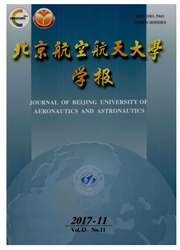

 中文摘要:
中文摘要:
对装有不同结构亚尺度肋片矩形通道的流动和换热进行了数值模拟,获得了通道流场、温度场分布以及平均努塞尔数的基本特征,对各种肋片通道的换热特性进行了对比分析.计算结果表明:亚尺度肋片距主肋片根部越近越有利于散热;在远离热面区域,亚尺度肋片的比表面积越大传热效果越好.当扩展表面积相同时,亚尺度肋片的长宽比越大换热效果越好;计算结果及分析揭示了控制肋片最优几何形状的统一原则——广义温度梯度均匀化原则,并依照此原则确定了可以强化换热的较优的肋片结构.计算分析表明广义温度梯度均匀化原则可以控制对流换热过程的传热强化.
 英文摘要:
英文摘要:
Numeration analysis was made to simulate the flow and heat transfer in a rectangular passage with different configuration of sub-scale fins,the velocity fields, temperature fields and the average Nu were obtained, the enhancements of heat transfer were compared. The calculated results show that: the lower the subscale fin fixed on the main fin, the more heat emanated from the hot surface transfers to the fluid ; in the region far from the hot surface, the higher specific surface area of the sub-scale fins, the better enhancement of heat transfer, with the same patulous area, the bigger fin length-to-width ratio, the better effect of heat transfer; numerical simulation result and analysis reveals the universal principle that the generalized temperature gradient uniformity principle, which can controls the best configuration of sub-scale fin. The better configuration of sub-scale fin which can enhance heat transfer has been conformed. Analyze shows that generalized temperature gradient uniformity principle can control the enhancement of heat transfer in the convective heat transfer process.
 同期刊论文项目
同期刊论文项目
 同项目期刊论文
同项目期刊论文
 期刊信息
期刊信息
